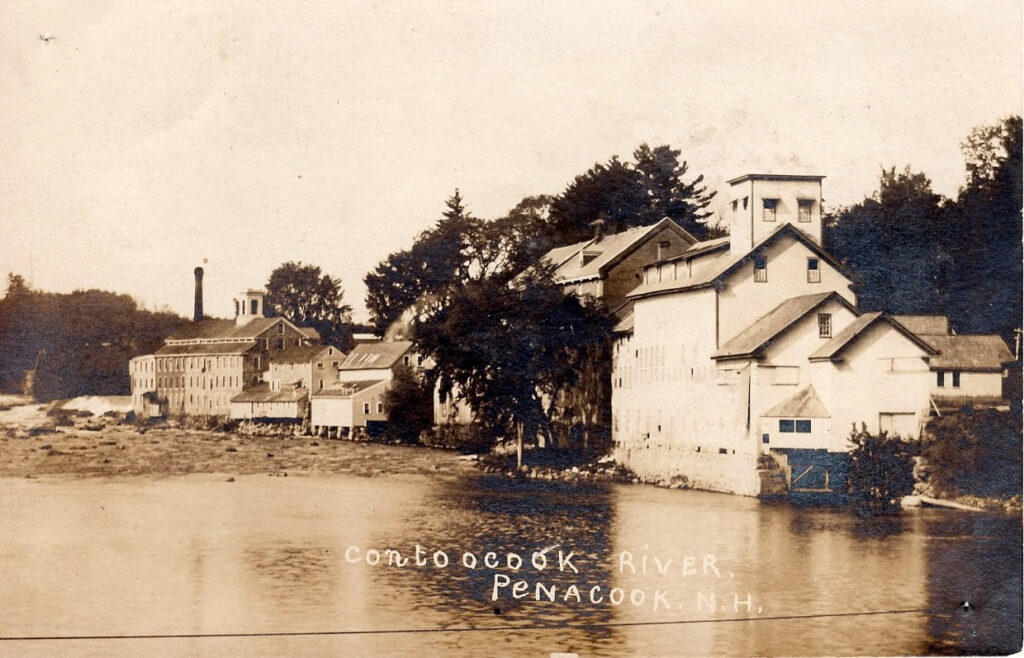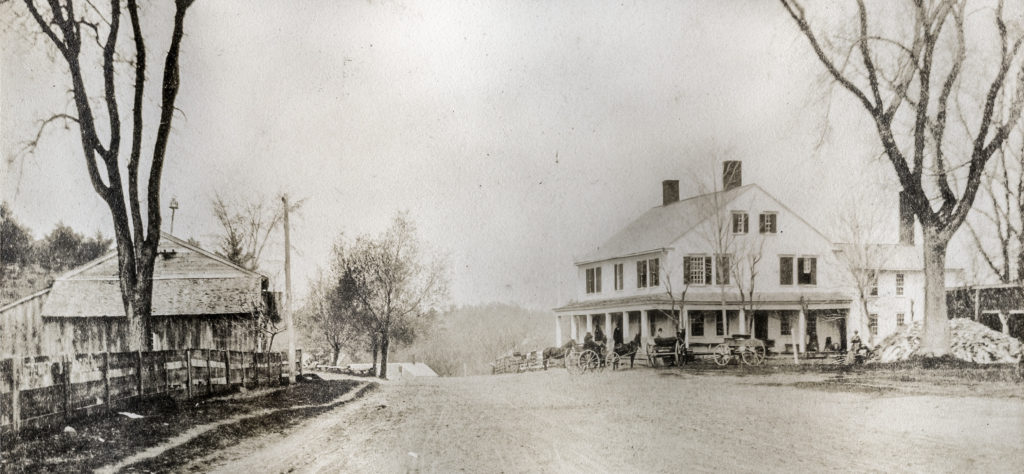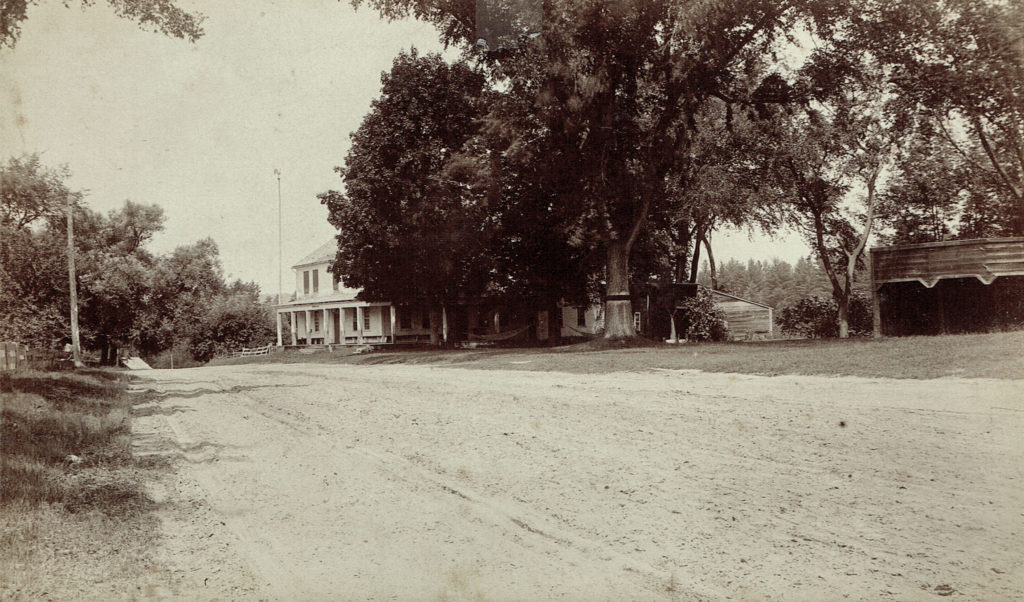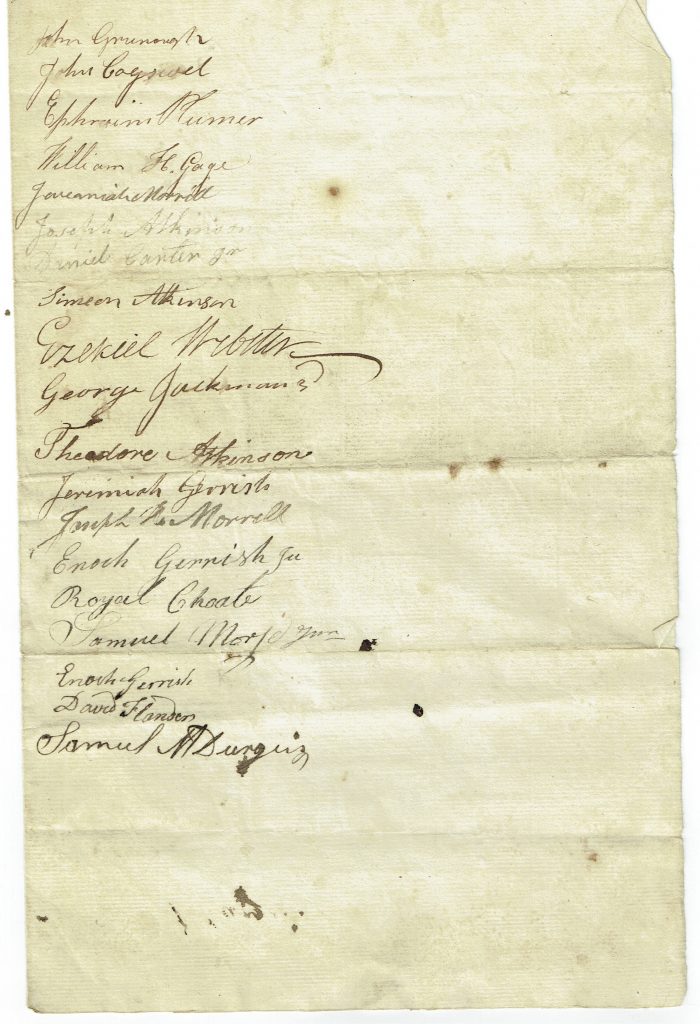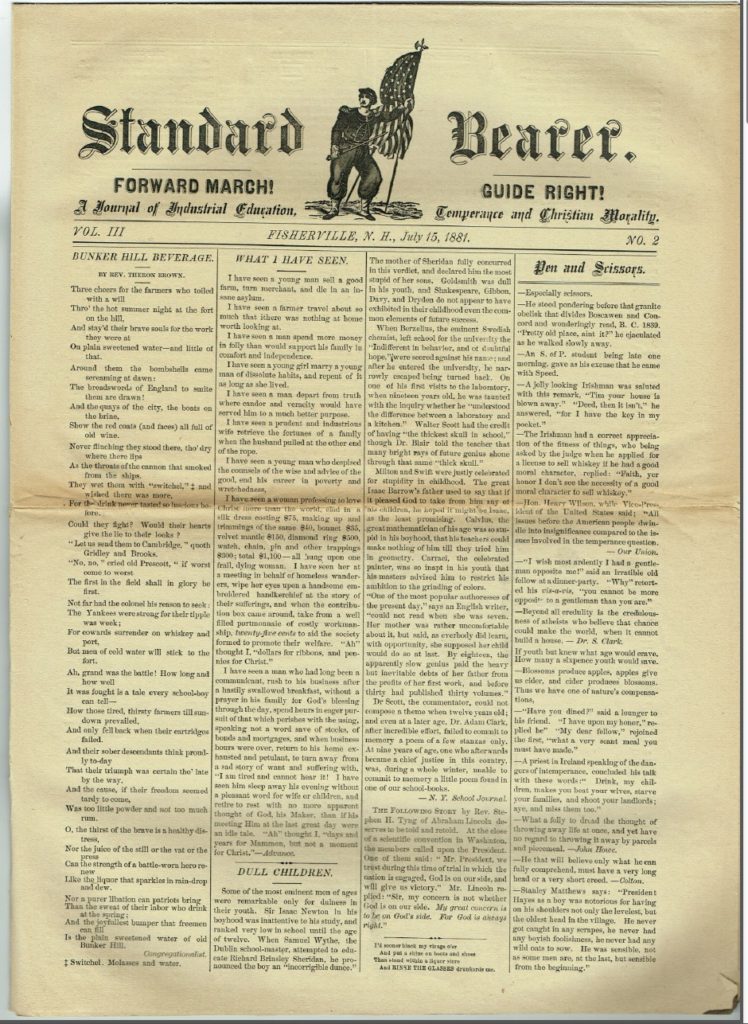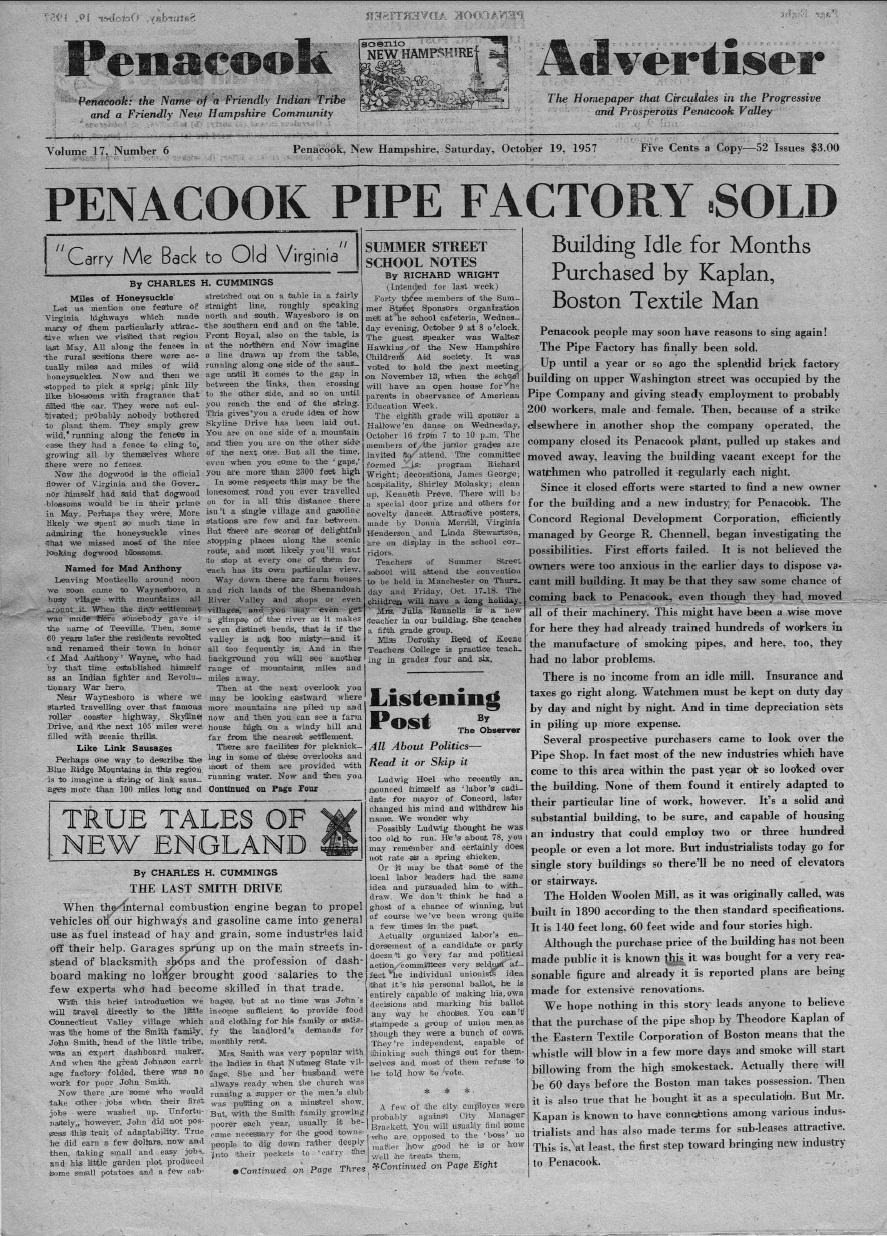Uncategorized
A Brief History of Commercial Street
Ambrose Tavern
We the undersigned………..
Standard Bearer – Fisherville N.H. – July 5, 1881
In 1880 the Rev. J. H. Larry assumed the position of Principal of the Penacook Academy in Fisherville, N.H. and established the “School of Practice”. For the next three years the school published a semi-monthly newspaper called “Standard Bearer” which had a circulation of around 1,000 copies per printing. In 1883 the school closed and the newspaper was no longer published.
 The listing from the 1883 edition of Rowell’s American Newspaper Directory.
The listing from the 1883 edition of Rowell’s American Newspaper Directory.
Published Fortnightly – By the “School of Practice” – FISHERVILLE, N. H.
“Here we unfurl our Standard, and enter the ranks of Virtue against Vice, Knowledge against Ignorance, Labor against Idleness, Truth against Skepticism.”
Click the image to read the complete July 15, 1881 edition.
Hannah Dustin Memorial Site Cleanup
The Boscawen Historical Society would like to thank Student Conservation Association, AmeriCorps and the State of New Hampshire Division of Parks Recreation for the hard work that was put forth at the Hannah Dustin Memorial Site.
Click here to read the entire story.

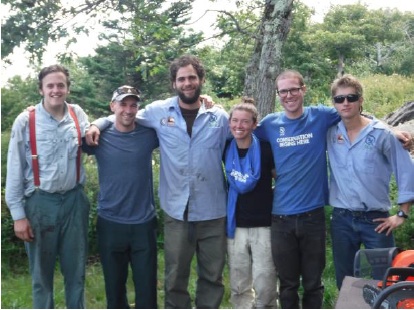
Click here to learn more about the Student Conservation Association
Click here to learn more about AmeriCorp
Click here to learn more about the New Hampshire Division of Parks and Recreation
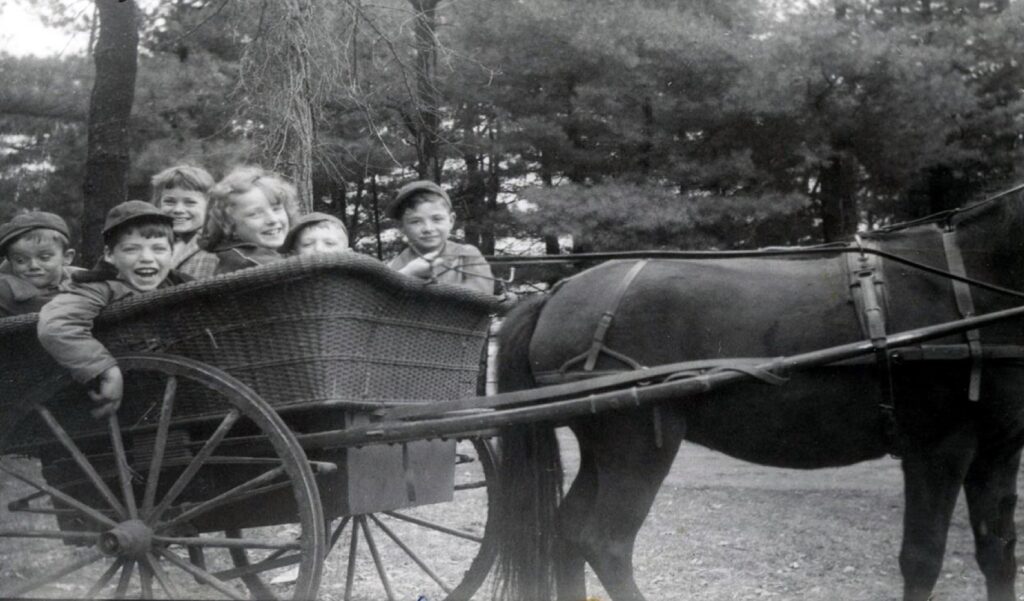
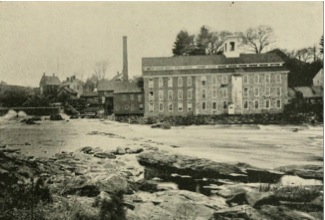 It was about 1790 when Jeremiah Chandler built the first gristmill at the lower falls of the Contoocook River near its confluence with the Merrimack River. The mill was located on the south end of Commercial Street between the dam and the future site of the Harris woolen mill. It was only ten years later that Richard Kimball and Jeremiah Abbott introduced the first woolen processing mill in the area, a carding and cloth finishing mill. In 1847, Almon Harris purchased the land these mills occupied and built the three story 75’ x 40’ stone building pictured here.
It was about 1790 when Jeremiah Chandler built the first gristmill at the lower falls of the Contoocook River near its confluence with the Merrimack River. The mill was located on the south end of Commercial Street between the dam and the future site of the Harris woolen mill. It was only ten years later that Richard Kimball and Jeremiah Abbott introduced the first woolen processing mill in the area, a carding and cloth finishing mill. In 1847, Almon Harris purchased the land these mills occupied and built the three story 75’ x 40’ stone building pictured here.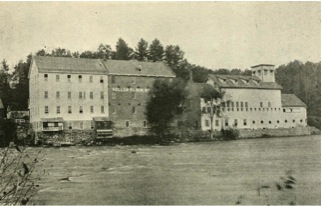 The first flour mill was built in 1857 by Calvin and John C. Gage at the north end of Commercial Street. Within two years of its construction it was sold to John H. Pearson & Co. of Concord. He operated the mills and a warehouse until 1867 when he sold the business to Barron, Dodge & Co., who ran the flour business until 1871, when the Whitcher & Stratton Company was formed. Upon the retirement of Mr. Whitcher, Henry C. Merrill of Manchester joined George L. Stratton and William K. MacFarland to form Stratton, Merrill & Co.; they re-built and modernized the mills.
The first flour mill was built in 1857 by Calvin and John C. Gage at the north end of Commercial Street. Within two years of its construction it was sold to John H. Pearson & Co. of Concord. He operated the mills and a warehouse until 1867 when he sold the business to Barron, Dodge & Co., who ran the flour business until 1871, when the Whitcher & Stratton Company was formed. Upon the retirement of Mr. Whitcher, Henry C. Merrill of Manchester joined George L. Stratton and William K. MacFarland to form Stratton, Merrill & Co.; they re-built and modernized the mills.